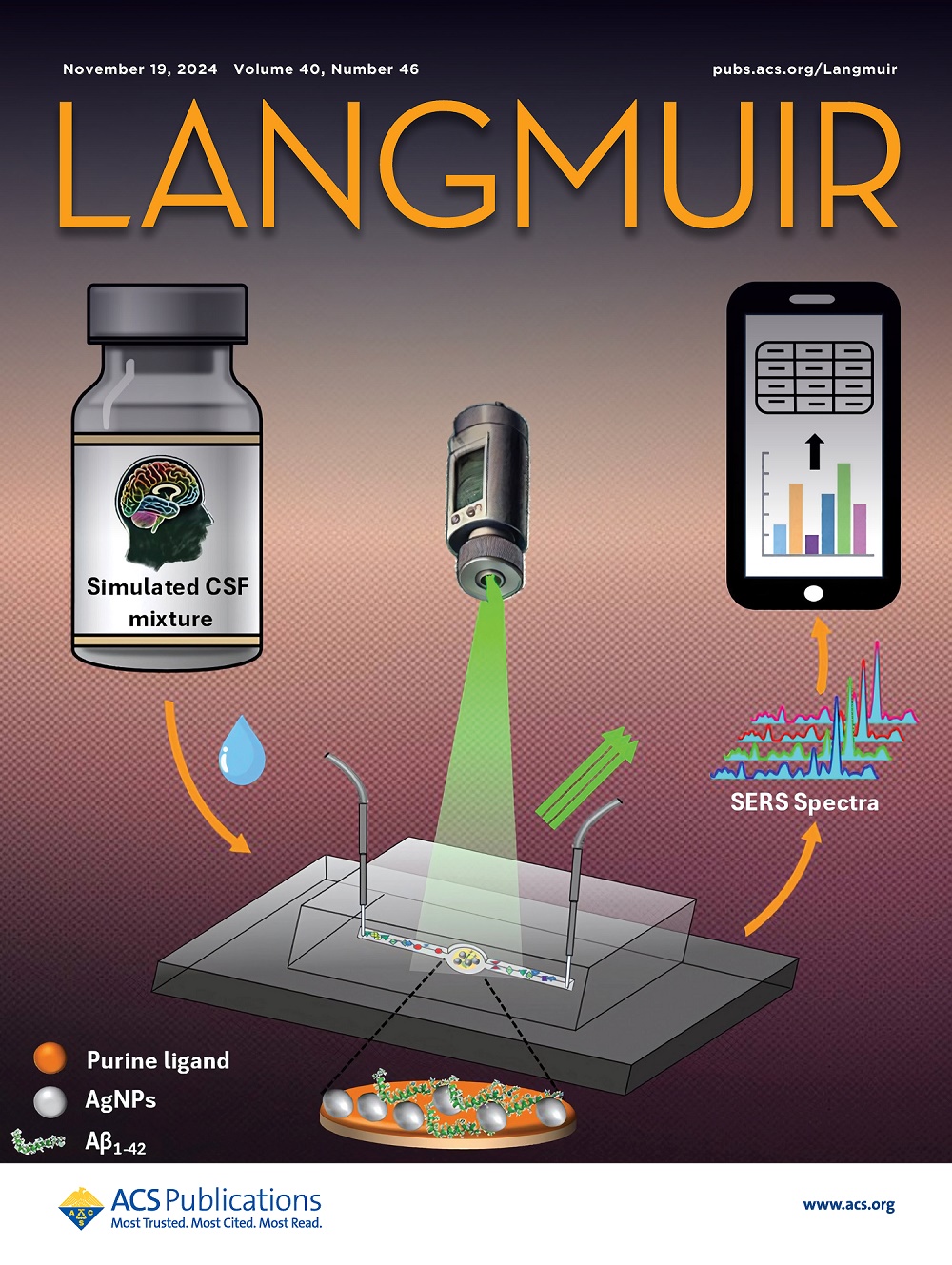Anisotropic Anti-Swelling Hydrogels with Hydrophobic Association and Metal-Ligand Cross-Links for Applications in Underwater Strain Sensing and Anisotropic Actuation.
IF 3.7
2区 化学
Q2 CHEMISTRY, MULTIDISCIPLINARY
引用次数: 0
Abstract
We report herein a strategy to design mechanically strong and anisotropic metal ion cross-linked conducting hydrogel materials and their possible application in anisotropic resistive strain sensing. A dynamic hydrophobic association was incorporated in a chemically cross-linked poly(acrylamide-co-methacrylic acid) hydrogel by incorporating a hydrophobic comonomer appended with a terpyridine ligand. After prestretching this hydrogel, Fe3+ ion-ligand cross-linking was established with carboxylic group of methacrylic acid and the terpyridine unit of the hydrophobic comonomer to lock the alignment of the polymer chains, which significantly enhanced the mechanical performance of the hydrogel. The anisotropic hydrogels achieved high mechanical strength of 1.6-2.7 MPa, breaking strain of 250-320%, toughness of 3-4 MJ m-3, and elastic modulus of 1.7-2.5 MPa under optimized experimental condition. Significantly inferior mechanical performance was observed when the load was applied in the direction perpendicular to prestretching direction. High fracture energy of 0.99 ± 0.4 kJ m-2 -similar to that of (∼1000 J m-2) the biological load bearing tissue cartilage-could be achieved when the crack was introduced perpendicular to prestretch direction. The anisotropic alignment of the polymer chains in the hydrogel was confirmed by FESEM and SAXS experiments. The Fe3+ ions as well as the hydrophobe concentration played a vital role in altering the mechanical properties of these hydrogels. The presence of hydrophobic association contributes to enhancing the mechanical anisotropy of the hydrogels, whereas the methacrylic acid-Fe3+ cross-links contributed to enhancing the tensile strength and stiffness of these anisotropic hydrogels. The hydrogel materials demonstrated anisotropic resistive strain sensing and anisotropic actuation behavior. These anisotropic swelling-resistant hydrogels also showed capability for stable and repetitive underwater strain sensing, which may have potential applications in underwater human motion sensing and soft robotics application.具有疏水缔合和金属配体交联的各向异性抗膨胀水凝胶在水下应变传感和各向异性驱动中的应用。
本文报道了一种机械强度高、各向异性金属离子交联导电水凝胶材料的设计策略及其在各向异性电阻应变传感中的应用前景。在化学交联的聚(丙烯酰胺-共甲基丙烯酸)水凝胶中加入了一种动态疏水缔合,其方法是将一种疏水共聚单体附加在三吡啶配体上。预拉伸后,该水凝胶与甲基丙烯酸的羧基和疏水共聚单体的三联吡啶单元建立了Fe3+离子配体交联,锁定了聚合物链的排列,显著提高了水凝胶的力学性能。在优化实验条件下,各向异性水凝胶的力学强度为1.6 ~ 2.7 MPa,断裂应变为250 ~ 320%,韧性为3 ~ 4 MJ m-3,弹性模量为1.7 ~ 2.5 MPa。当载荷垂直于预拉伸方向时,其力学性能明显较差。当裂缝垂直于预拉伸方向引入时,可获得0.99±0.4 kJ - m-2的高断裂能,与生物承载组织软骨的(~ 1000 jm -2)相似。FESEM和SAXS实验证实了聚合物链在水凝胶中的各向异性排列。Fe3+离子和疏水剂浓度对水凝胶的力学性能起着至关重要的作用。疏水缔合的存在有助于提高水凝胶的力学各向异性,而甲基丙烯酸- fe3 +交联有助于提高这些各向异性水凝胶的抗拉强度和刚度。水凝胶材料表现出各向异性电阻应变传感和各向异性驱动行为。这些各向异性抗膨胀水凝胶还显示出稳定和重复的水下应变传感能力,在水下人体运动传感和软机器人应用中具有潜在的应用前景。
本文章由计算机程序翻译,如有差异,请以英文原文为准。
求助全文
约1分钟内获得全文
求助全文
来源期刊

Langmuir
化学-材料科学:综合
CiteScore
6.50
自引率
10.30%
发文量
1464
审稿时长
2.1 months
期刊介绍:
Langmuir is an interdisciplinary journal publishing articles in the following subject categories:
Colloids: surfactants and self-assembly, dispersions, emulsions, foams
Interfaces: adsorption, reactions, films, forces
Biological Interfaces: biocolloids, biomolecular and biomimetic materials
Materials: nano- and mesostructured materials, polymers, gels, liquid crystals
Electrochemistry: interfacial charge transfer, charge transport, electrocatalysis, electrokinetic phenomena, bioelectrochemistry
Devices and Applications: sensors, fluidics, patterning, catalysis, photonic crystals
However, when high-impact, original work is submitted that does not fit within the above categories, decisions to accept or decline such papers will be based on one criteria: What Would Irving Do?
Langmuir ranks #2 in citations out of 136 journals in the category of Physical Chemistry with 113,157 total citations. The journal received an Impact Factor of 4.384*.
This journal is also indexed in the categories of Materials Science (ranked #1) and Multidisciplinary Chemistry (ranked #5).
 求助内容:
求助内容: 应助结果提醒方式:
应助结果提醒方式:


